Have some leftover fish or just a spare head? Check out this fish stew that makes use of all in the best way one can!

Probably few who have grown up on smoked salmon and tuna salad would think about making soup from fish but where herbs and spices are in abundance, nothing is impossible.
Making soups has been part of our culinary heritage since humans are able to heat water in hollow rocks and clay dishes but the days of glory long evaded this humble food preparation form.
We can’t really blame ourselves on sidelining soups though, considering that one of the main reason soups exist is to make food edible that are hard to access or little desired otherwise. This is how we use up chicken bones, pork cuttings or anything that would take ages to scrape off from their carcasses.
Sure enough, since that French have discovered mirepoix, roux or béchamel soup are hardly remembered for their original purpose. Now we make soup not only to use up the scrapings and save some pennies while filling up bellies.
We make soup for their own pleasure or displeasure if anyone had been fortunate enough to be served a spoonful of rice or pasta in chicken stock as a soup.
As soup can vary in texture due to the various preparation method, we can thank again to the French for categorizing them thus making some order in the chaotic world of cooking with water.
For those who are fascinated with this underwater world check out the fascinating world of soup types.
Our fish soup will find itself in the bisque category, however we aren’t going to use crustaceans to prepare the dish.
Traditionally this soup is made from fish that have many bones or as a way to salvage as much nutrients form the carcasses as possible. Removing the flesh from the bones by boiling in water is much more effective method than sucking off on tiny fish-bones for traces of juicy flesh.
The carcass generally needs more cooking time for the flesh properly separated than fish fillets. Depending on the amount and size of the batch, we can easily spend and hour preparing the fish stock for our soup.
After we separate the bones from the liquid a sturdy mesh strainer can be used to make a paste from the remaining meat on the bones by pressing it through the sieve.
If we are rather inclined to use an immersion blender -which could be totally understandable after 5 minutes of scraping bits of fish through holes- try to resist the temptation to do it so if we use fish with plenty of bones and skin as that may turn the soup into a different texture from what we originally planned.
This hard-earned fish paste will give our soup thickness naturally without using further starch or cream. Adding more vegetables to liven up our soup is always welcome and highly encouraged to experiment with.
When our stock is done ideally, we have some fillets lying around that only need a maximum of 20 minutes to cook, depending on the fish we use but most of the time less.
However, making fish soup sounds like a tiresome adventure at first, at the end of the day it is a soup. Soups are forgiving in nature so if a couple of steps or herbs are left out or substituted with other ingredients, we still got something quite edible even if it’s not the same as our mother used, serving us for Christmas.
Given the absurdly scarcity of ingredients, this stew can be used with any fish. It works best with fatty, fresh water fish but there is no restriction to use it with salt water fish either. Though it hasn’t been tested with salmon yet.
What is the name for fish stew?
It depends of what country we are in. Cioppino is an Italian-American fish stew originating in San Francisco while Bouillabaisse is a french fish stew originating from Marseille.
Is fish soup healthy?
If we overlook the fact that some fish are filled with heavy metals and plastic fish is a healthy food filled with good stuffs our body needs. A soup form a healthy fish will be as healthy as the fish itself but tastier.
Can fish stew be frozen?
Fish stew can be frozen and it will loose little of it’s original flavor given that it was frozen soon after it was made.

Ingredients
- 2lb / 1kg Fish cuttings (head, spine, tail)
- 1lb / 500g Fish (slices)
- 2 medium / 300g Onion (diced)
- 3 teaspoons / 6g Paprika
- 1 teaspoon / 5g Salt
- 1 teaspoon / 3g Black pepper
- 2 cup / 500g Water
- 1 teaspoon / 2g Parika
How to make fish stew
- Clean and gut the fish.

- Cut off the tail and head then put them in a sauce pan. Of course we can use totally fine fish for this but since it’s fish stew is about using up scrap meat.

- Dice up the onions.

- Add the onions, paprika, optional salt and black pepper to the sauce pan.

- Fill the sauce pan up with water until the ingredients are submerged and bring it to boil.

- Simmer it for 60 – 90 minutes until the meat easily separates from the bones.

- Separate the hard parts from the liquid then start the meat extraction process.

- Mash through the meat of the fish on the holes of a sturdy sieve. It’s a heartbreaking toil so better get a special equipment designed for pureeing things. Even better if it’s electric. An immersion blender may come handy but that also means we’ll puree the fish bones too.

- Pour the pureed fish back into the liquid and we have a delicious fish stock / stew ready.

- To make it more appealing put the fish stock back on the cook top, add a some more paprika and some sliced up fish pieces.

- Bring it boil then cook it on medium heat until the fish is done, about 5 – 15 minutes depending on the width and type of fish we use.

Enjoy!
Note: As fish stock being a labor intensive and quite messy task it’s recommended to do bigger batches and freeze the stock for later easier use.

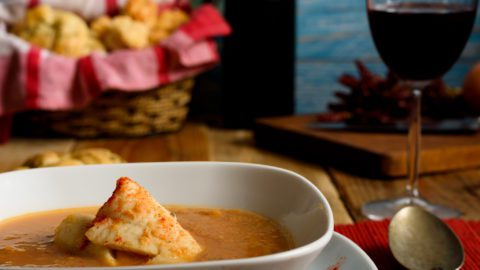

Star this recipe!
Fish Stew Recipe – Fish Soup
Ingredients
- 2 lb Fish cuttings head, spine, tail
- 1 lb Fish
- 2 medium Onion diced
- 3 teaspoon Paprika
- 1 teaspoon Salt
- 1 teaspoon Black pepper
- 1 teaspoon Paprika
- 2 cups Water
Instructions
- Clean and gut the fish.

- Cut off the tail and head then put them in a sauce pan.

- Dice up the onions.

- Add the onions, paprika, optional salt and black pepper to the sauce pan.

- Fill the sauce pan up with water until the ingredients are submerged and bring it to boil.

- Simmer it for 60 – 90 minutes until the meat easily separates from the bones.

- Separate the hard parts from the liquid then start the meat extraction process.

- Mash through the meat of the fish on the holes of a sturdy sieve. It's a heartbreaking toil so better get a special equipment designed for pureeing things. Even better if it's electric. An immersion blender may come handy but that also means we'll puree the fish bones too.

- Pour the pureed fish back into the liquid and we have a delicious fish stock ready.

- To make it more appealing put the fish stock back on the cook top, add a some more paprika and some sliced up fish pieces.

- Bring it boil then cook it on medium heat until the fish is done, about 5 – 15 minutes depending on the width and type of fish we use.

Notes
Nutrition
Pin now, Enjoy later!

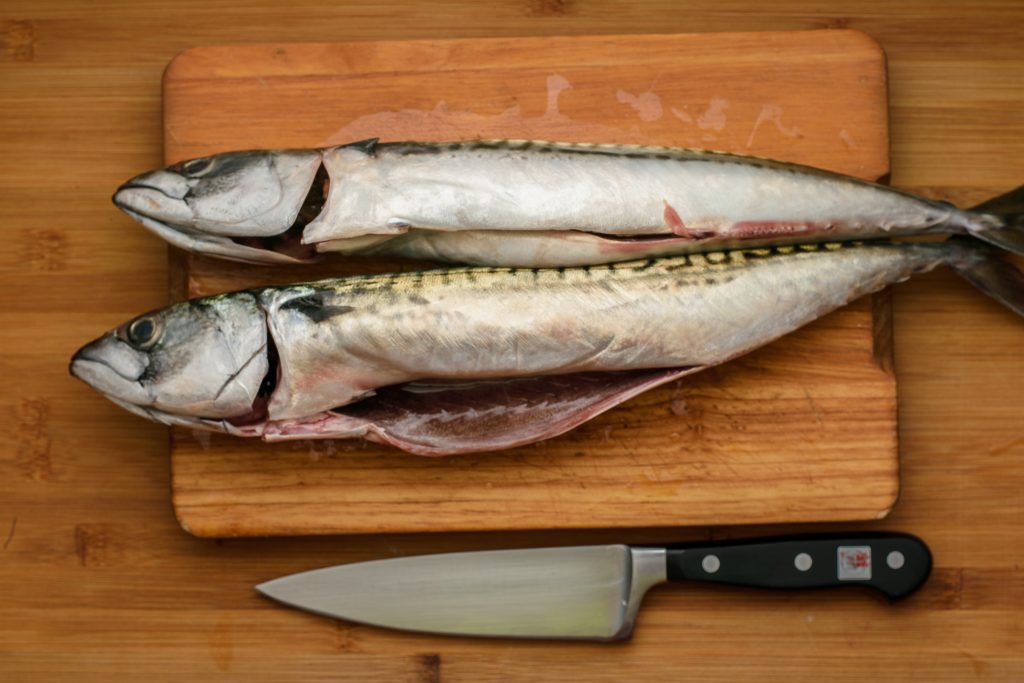
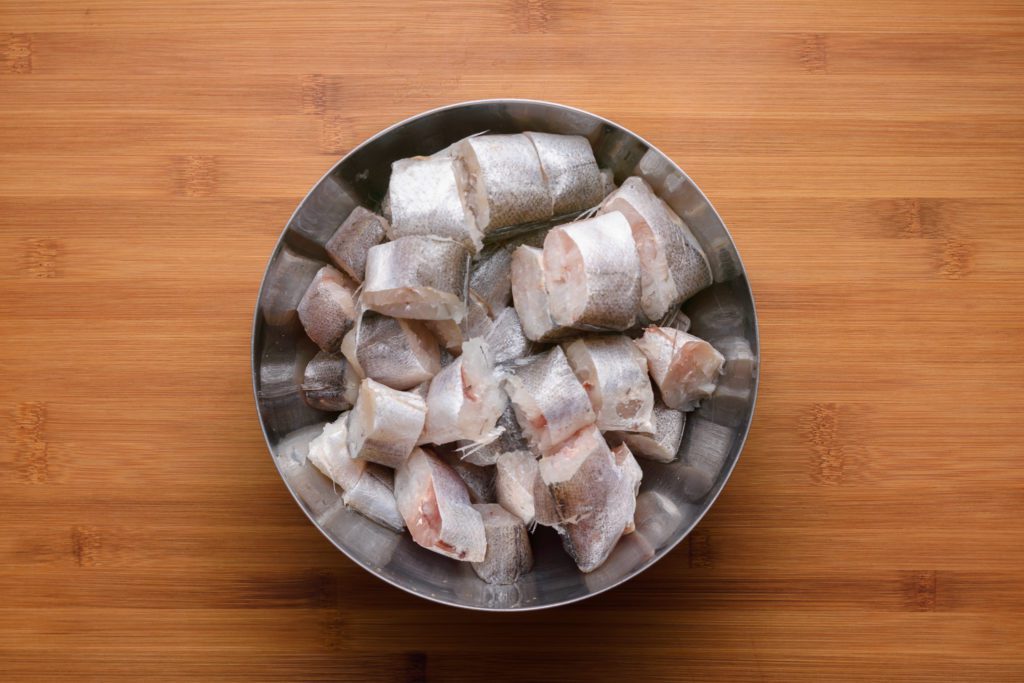

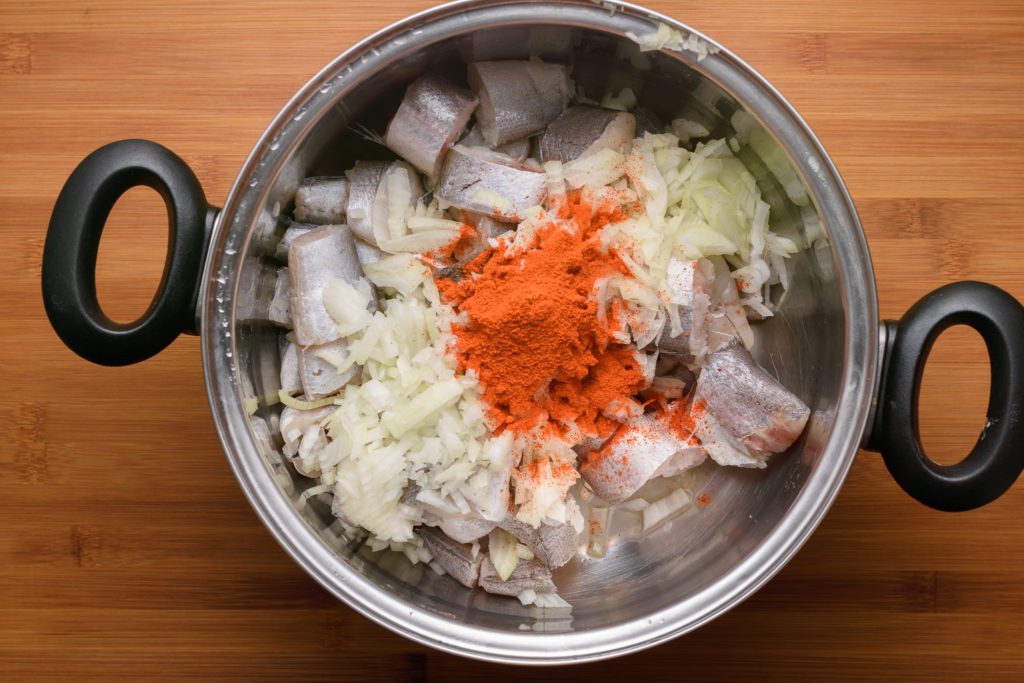
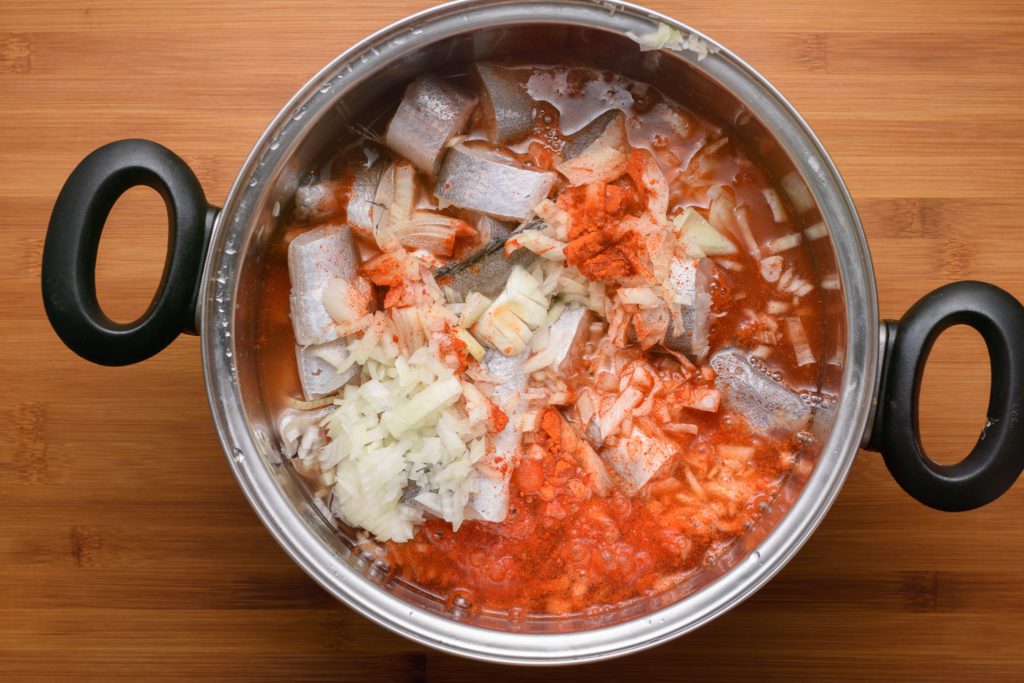
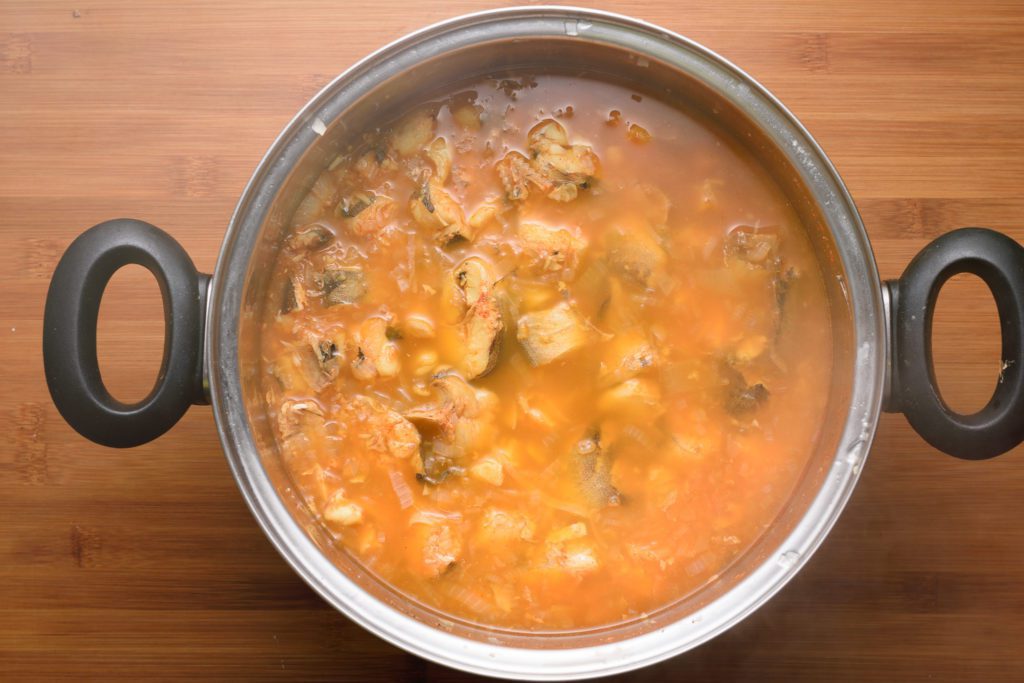
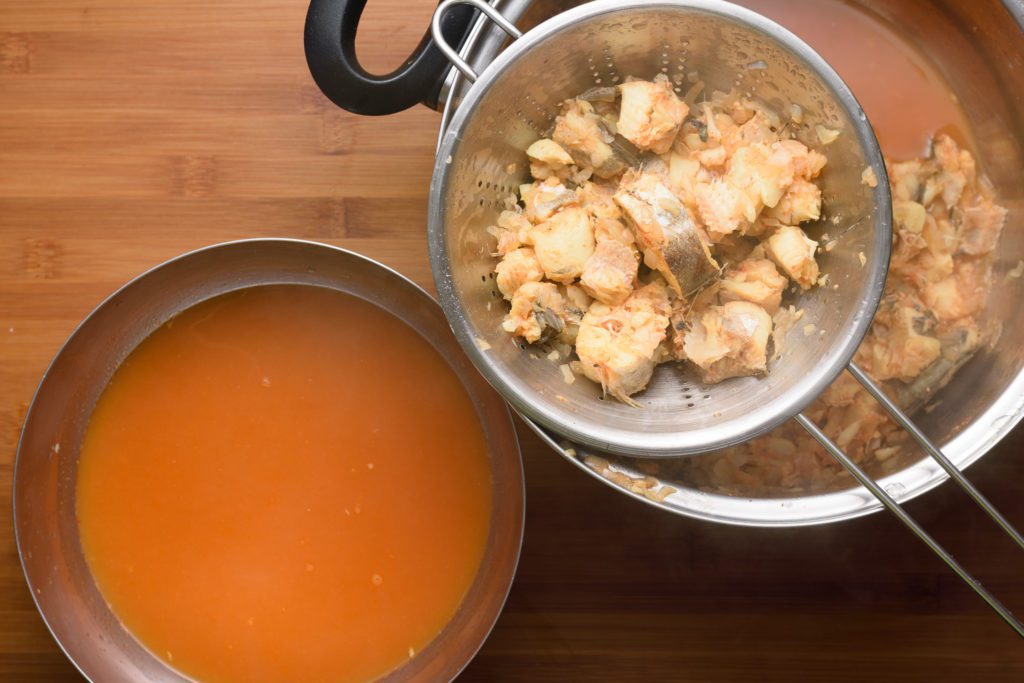

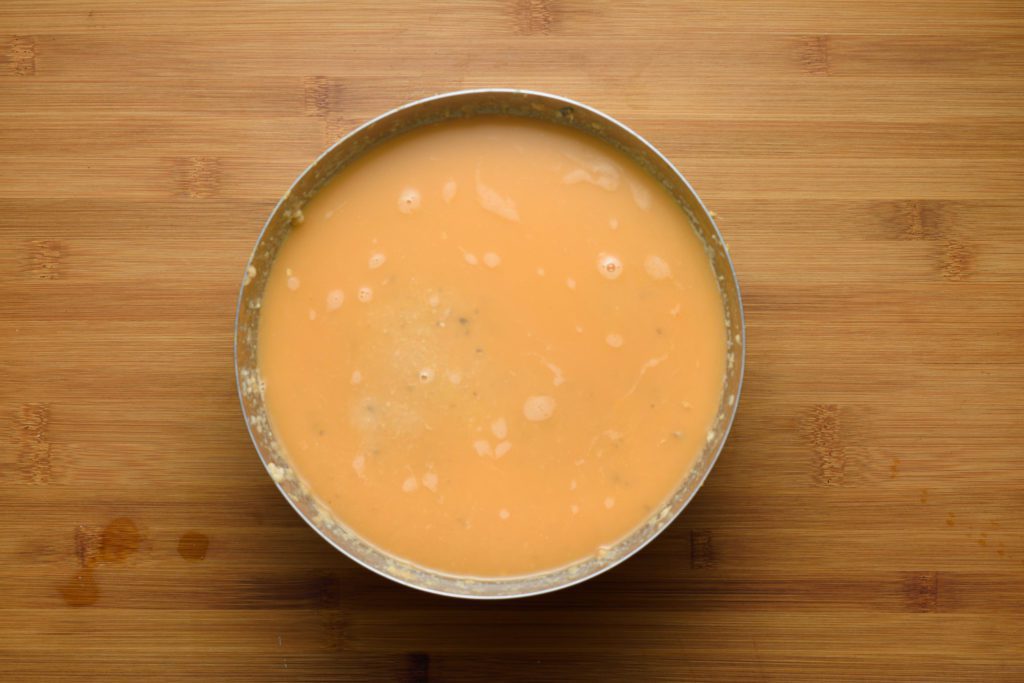
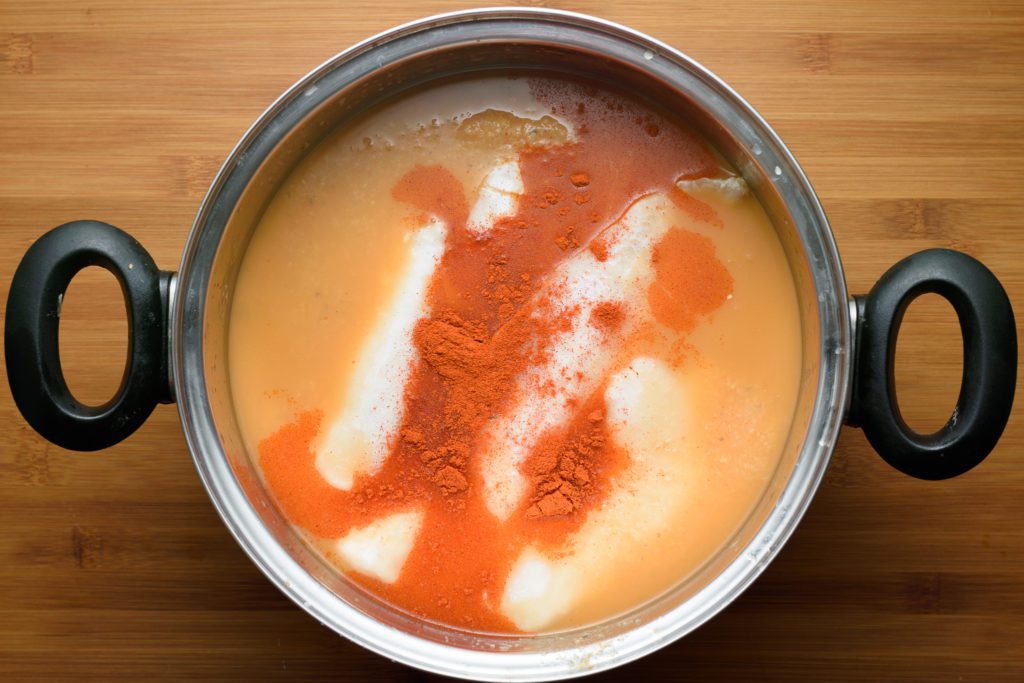
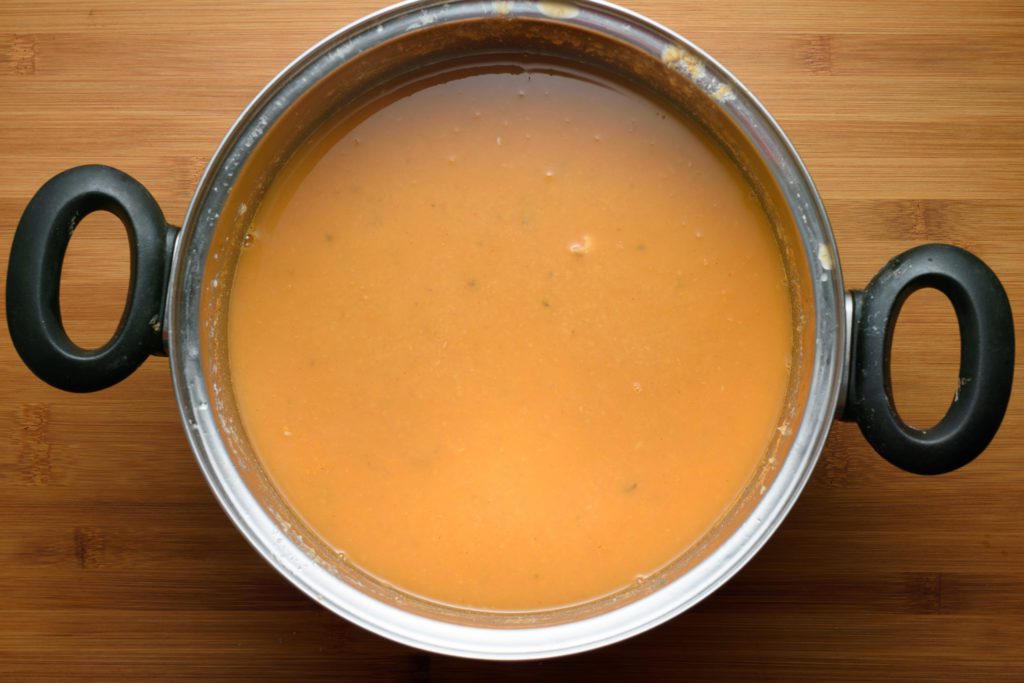
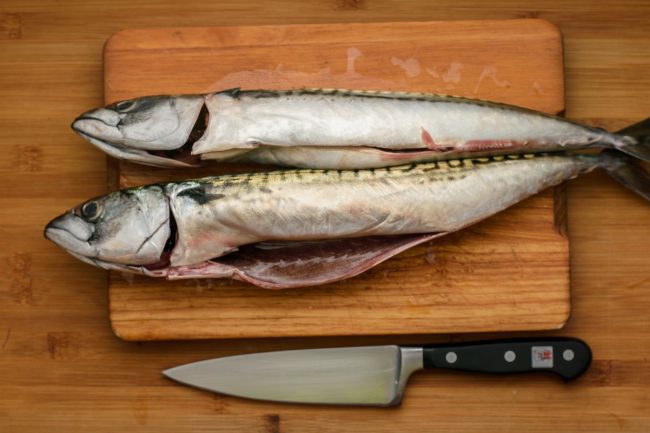
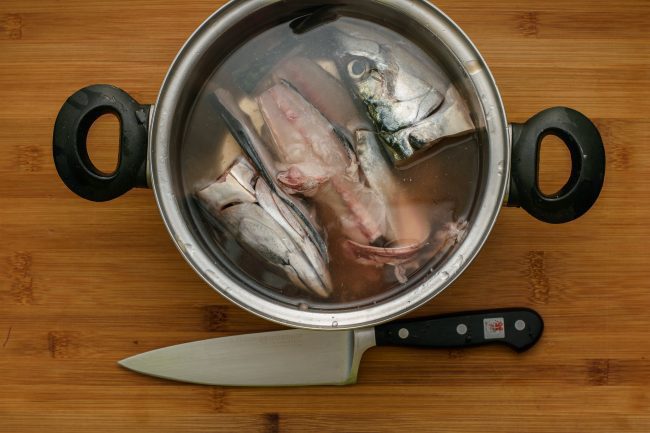
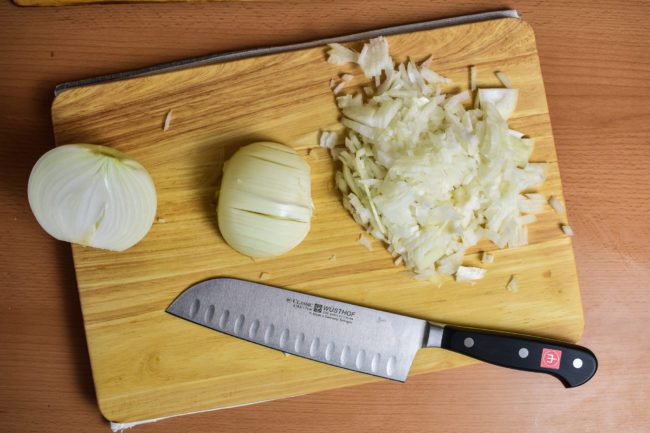
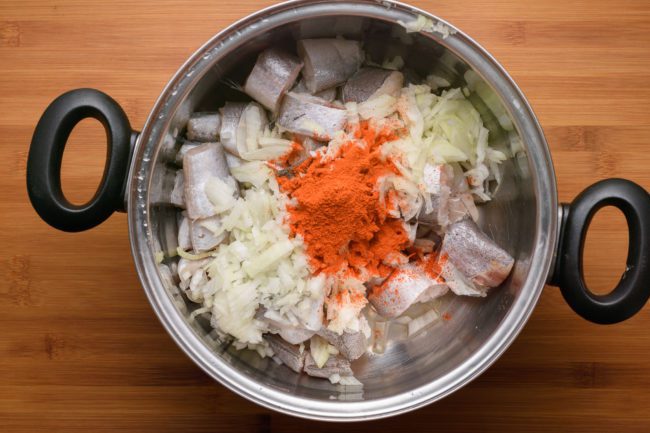
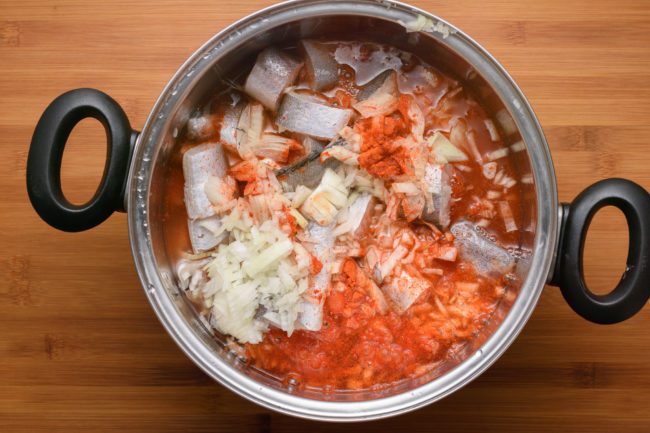
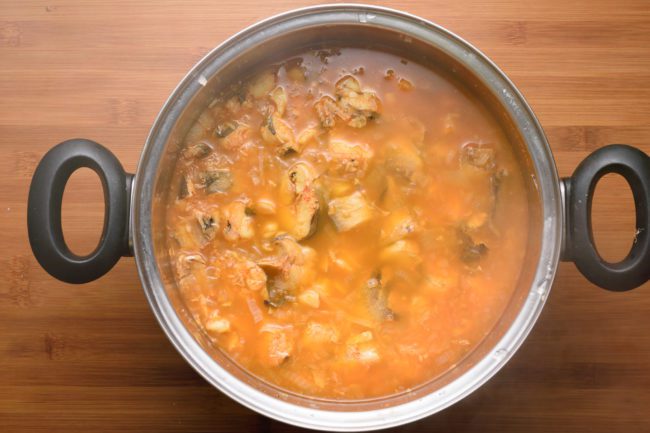
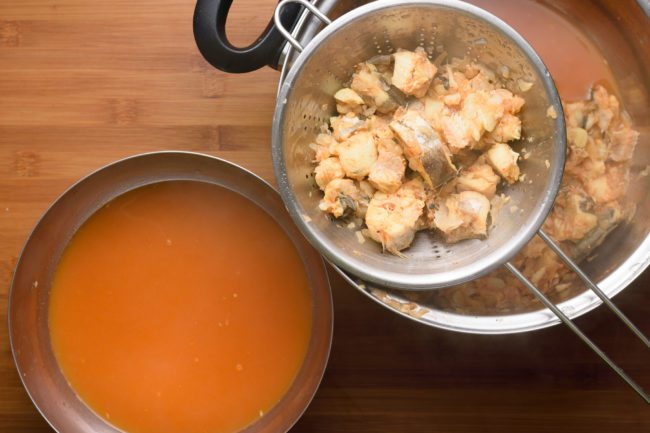
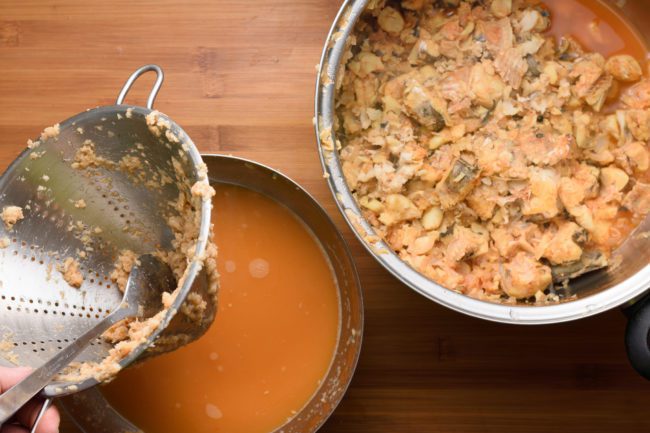
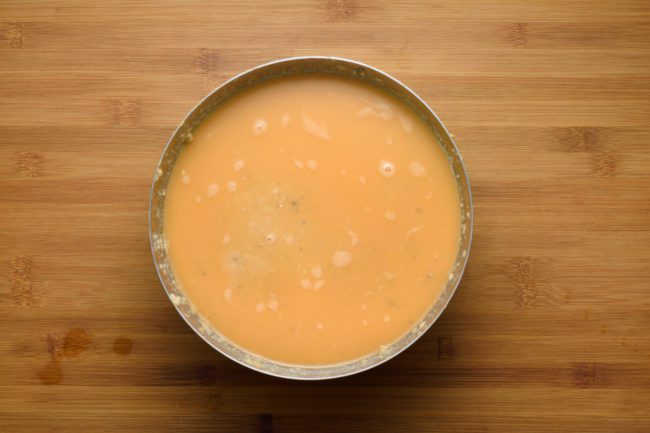
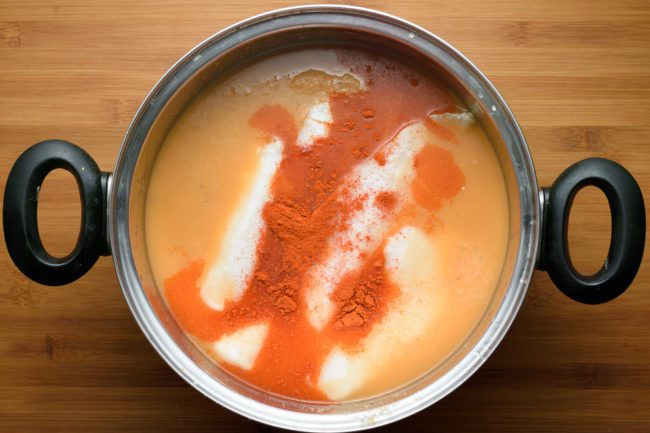
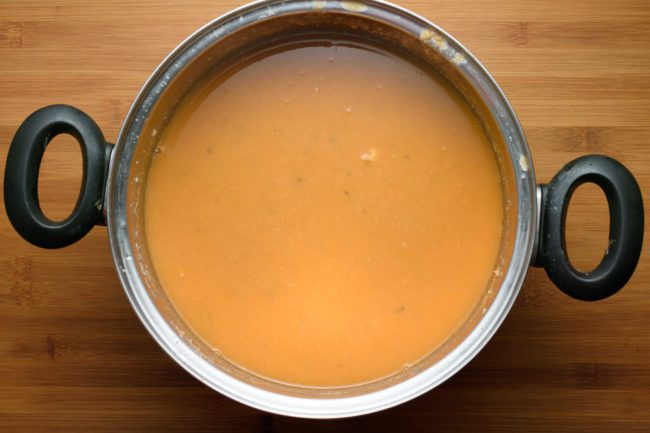

I dont understand the recipe, you’ve pureed the fish oieces so how come you still have some sliced pieces left????
Thanks for getting into touch! Only the fish cuttings (head, spine, tail,) are pureed. The recipe also lists 1lb / 500g fish too that is used once the stew is ready. It’s not necessary at all as the fish stew only needs the cuttings but if you want to make it in a more presentable state then adding a couple of slices of fish makes the dish more appealing than just a plain bowl of liquid. The recipe has been updated to make things a bit clearer. Let us know if anything is still amiss! Thanks!
I was looking for a recipe for fish stew and used this as my base. I didn’t puree the fish, I added basil, cilantro, and parsley along with diced tomatoes, carrots & potatoes. I added sofrito and white pepper. It’s delicious.